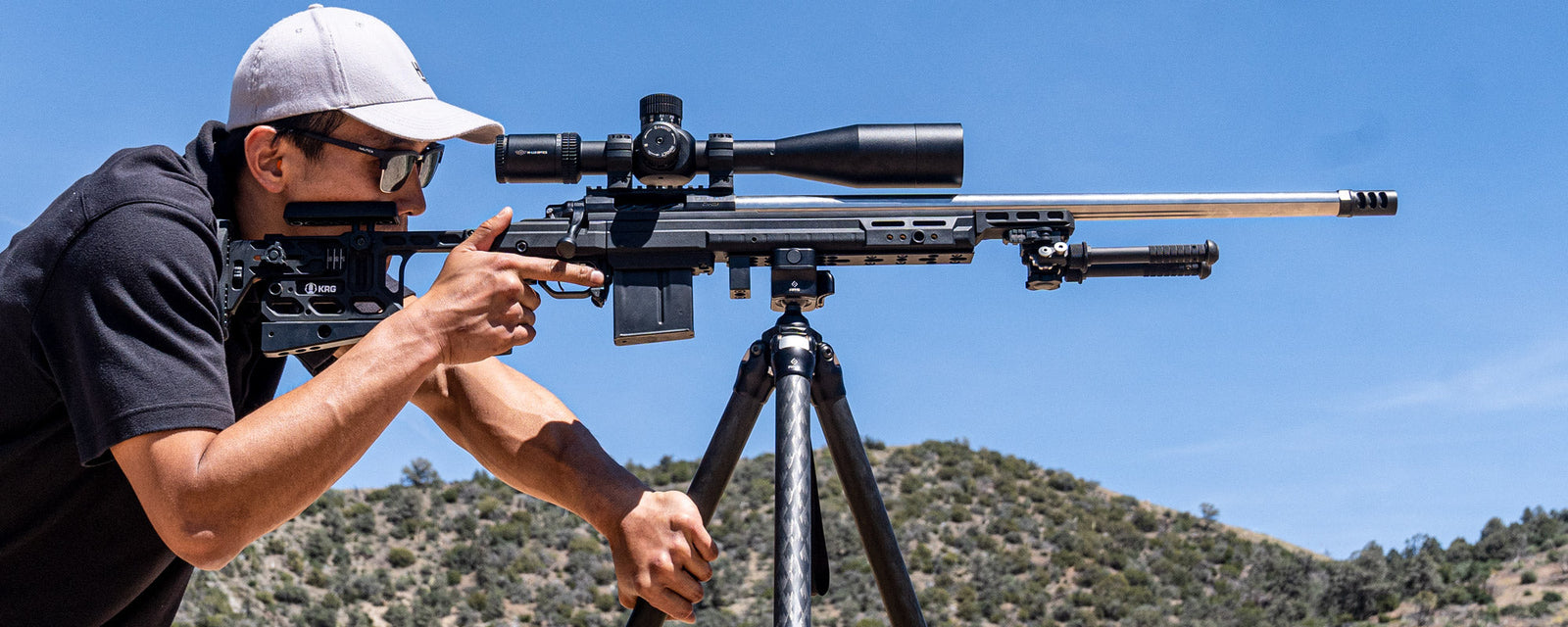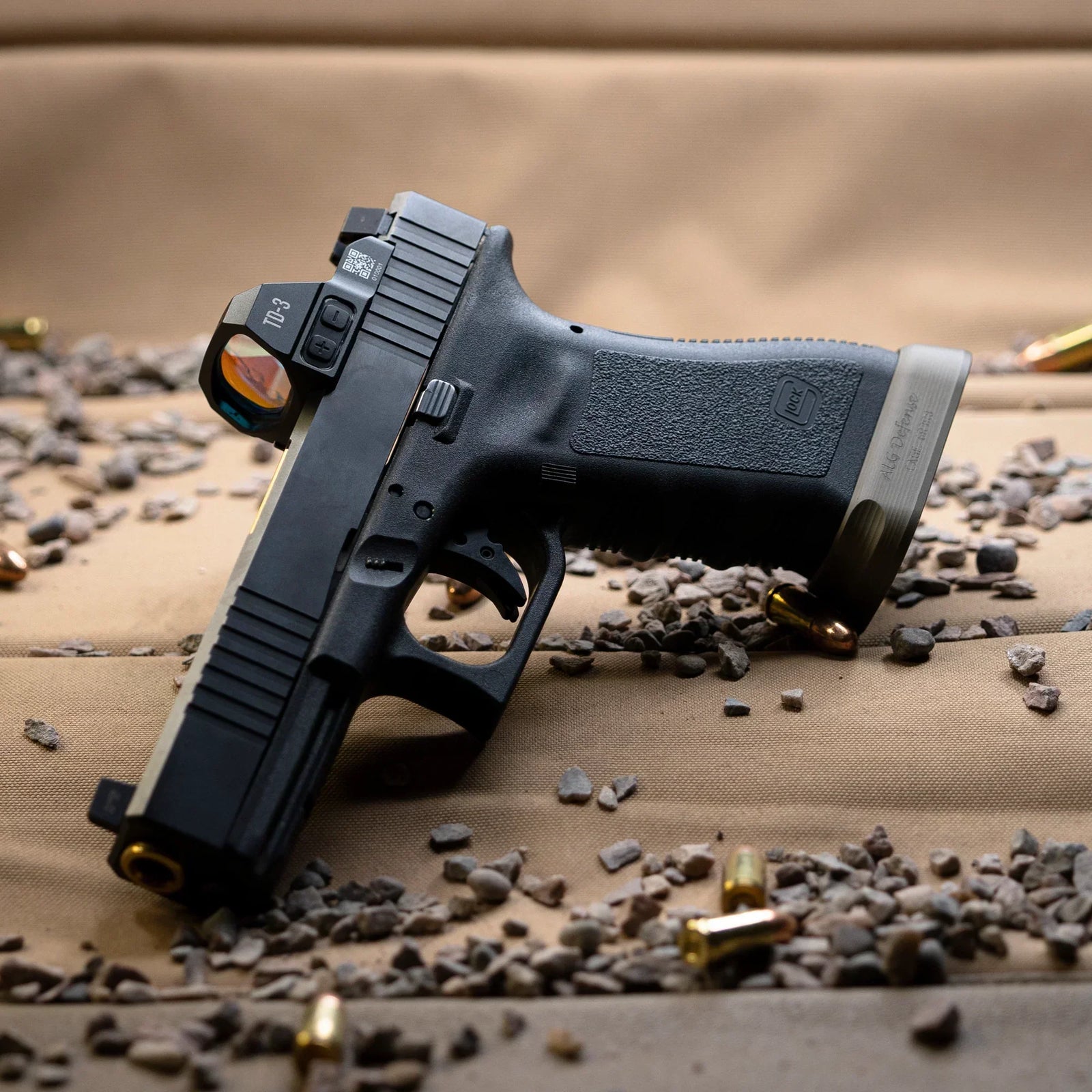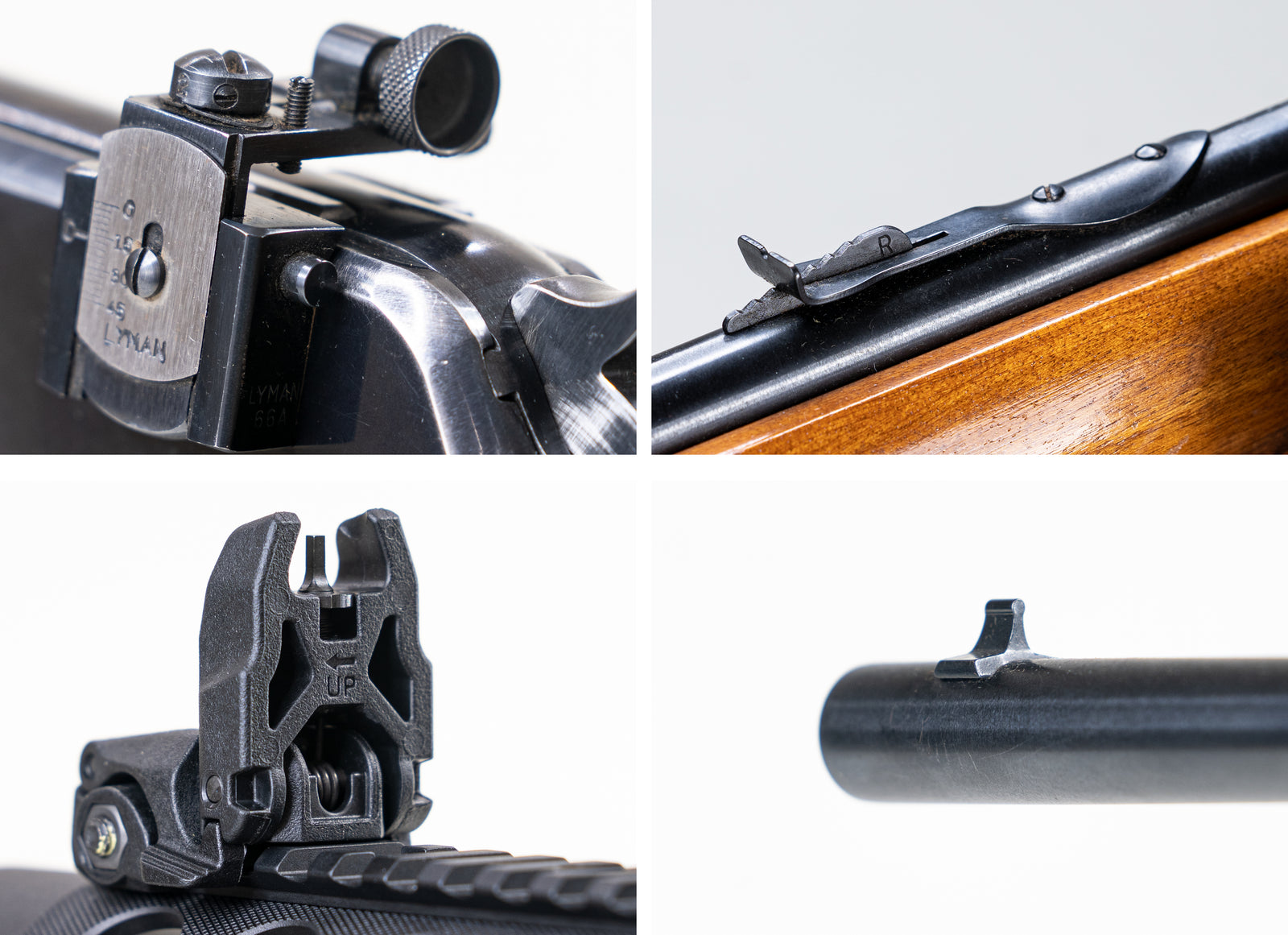With modern glass and the growth of LED capabilities, more advanced sights than irons have come into the fold.
Reflex sights, also known as Red Dots, work on reflection of light. Don't worry - the LED isn't shining directly into your eye. It bounces off some specially treated glass before reaching you. It's worth mentioning that a reflex sight is different from a holographic sight, which has a more complicated mirror-and-light system by far.

A red dot sight mounted on a Winchester 94 lever action rifle.
How Does a Red Dot Work?
Red dots have a few essential components that provide an interesting solution for close to mid range shooting. Modern red dots use LEDs, which shine onto a curved partial mirror. This mirror is curved in such a way that the LED bounces back at your eye in a consistent manner. Unlike lining up a front and rear iron sight with the target, you simply lay the dot over the target. The sight forms almost an overlay that you can simply paint on the target. While iron sights give you plenty of opportunity for misalignment, a red dot will show any change in aiming angle as the light bounces at your eye from a new position.

The mirror is also coated in particular ways to enhance its basic functions. The red illuminated dot bounces back toward your eye, allowing you to see it. The view through the mirror to the target is also visible, though it may be somewhat darker or oddly colored due to the glass’ coatings. The front of the mirror is coated to cut down on reflection.
Older reflex sights were clunky and dimly lit, and the very earliest required a reflection of passive light. Modern red dot sights shine a small LED light against the inside of a specially coated glass, shining a clear point on where you’re aiming.
Are Red Dots Always Red?
Somewhat uncommonly, red dots may be offered in other colors. Another option is the green dot, which performs the same task with a green-colored dot. Green is not as apparent to the eye. It is more likely to wash out, or become indistinguishable from the background. This is especially apparent when your target is in a vibrantly green landscape. Red is much easier to distinguish from whatever you’re looking at, except in certain forms of color-blindness. Even more rarely, some gold or yellow dots have been made.
At the end of the day - red dots are sometimes offered in other colors, but far more varieties exist in shades of red than other colors.
Can a Red Dot Have a Reticle?
The LED may shine directly at the mirror, or else first pass through a specially cut plate. If it passes through a plate, it will carry the shape of the plate up to the glass. This is how a red dot is given a reticle other than a simple dot. A reticle is a group of lines and shapes that assist you in visually lining up a shot. The specially cut plate can also act as an aperture, cutting down on the size of the dot.
Does Dot Size Matter?

A plain view of a 10” target at 100 yards. Second, a red dot overlaid on the target. On the far right, a circle red dot on the same target.
Like iron sights, the red dot’s size is important. If your target is small, the red dot may visually cover the target. For items that are far away, the same effect occurs. You can’t hit what you can’t see, and this leaves red dots (which have no magnification) at a disadvantage on long-distance targets.
One of our more popular red dots has a dot that is 3 MOA across. We’ll get into the math of Minute of Angle measurements in another article, but suffice to say: this would cover a 3” target at 100 yards, a 6” target at 200 yards, and a 9” target at 300 yards. Up close, a red dot is often much easier to use than iron sights. At a distance, both red dots and iron sights have the same problem - visually obscuring the target.

To hit a smaller (more distant) target, you’ll need a smaller dot. However, a small dot is more difficult to see. There is a limit to how small you can go and still have the dot be usable.
Open vs Closed Red Dot
Red dot chassis may be open or closed.
A closed red dot looks remarkably like a very small scope. The entire tube is… well, a tube. There’s glass on the front and back, and you look through the tube to line up the dot. A closed red dot is well protected from the elements, such as rain and dust. It will appear brighter and more distinct than an open red dot, due to the sun protection of the tube.
By contrast, an open red dot has one pane of glass, open to the air on both sides. It has a greater chance of getting scratched or dinged up, and certainly more opportunity for dirt and debris. I can’t tell you how many fingerprints I’ve had to clean off mine. Still, an open red dot is lighter and smaller than a closed red dot. It also provides a wider view of the field than a closed red dot, as there isn’t so much tube in the way of your vision. Open red dots also have a chance at visually distracting reflections when facing towards a strong light source (such as the sun), though this can be solved by not pointing your firearm at the sun.

Two different red dots on the same rifle. The upper example is of a ‘closed’ red dot, while the lower is of an ‘open’ red dot.





Leave a comment (all fields required)